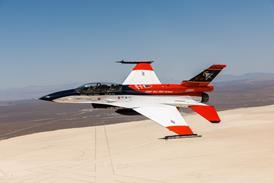As we enter 2009 there is little doubt that the necessary conditions for recession are already being satisfied. In the US, most of Europe and Japan the economies are already in a technical recession with two consecutive quarters of contraction. In Asia (excluding Japan) GDP forecasts are already below the 5-6% considered necessary to absorb the increase in the working population.
It looks as though 2008 was the year of progressive realisation of the problem and 2009 will be the year of real action - although of course capacity reductions did begin at the start of 2008's winter season. The reality is that improvement can only start once the bottom has been reached and we are still some way away from that point. In particular, the timing of the turning point and the nature of the recovery beyond it depend on the nature and scale of the adjustment processes planned or underway. The area where there is little public evidence of adjustment, however, is that of future aircraft deliveries - but this cannot be far away.
The US airline industry led the way with announced capacity reductions and the forthcoming results will show the consequences of this. The most important focus should be on whether actions result in a widening of the gap between the breakeven load factor and the achieved load factor. This depends on whether unit costs fall as a result of the actions and unit revenues rise.
Even at the best of times, cash is king in the airline industry - IATA's latest forecasts expect industry revenue to fall by $35 billion between 2008 and 2009. On the other side of the equation, costs are forecast to fall by $38 billion, of which fuel will account for $32 billion. A decline in revenue is immediate and direct, while reductions in cost are less certain and generally lagged.
Structural change, albeit with the cyclical downturn as the catalyst, will show through as a result of airlines re-evaluating their requirements. Most recently easyJet, Jet Airways, Kingfisher and the Civil Aviation Administration of China have made statements moderating previously announced delivery plans and moving some expected deliveries into the future. My own analysis suggests that some 1,600-1,800 aircraft orders in the 150-seat segment appear to be at risk from a likely change in the future needs of the customers. However, these have yet to be publicly recognised by the customers themselves and in the first instance are likely to show through as deferrals rather than outright cancellations.
There is also the issue of financing deliveries from the latter part of this year. For the manufacturers, the issue increasingly appears to be the extent to which they will need to reduce production rates. Furthermore, in the last downturn the low-cost carriers, as almost the only customers, were able to take advantage of some particularly attractive prices. As a result, net orders in the 150-seat segment held up well with over 770 aircraft ordered in the 2002-2003 period compared with 61 in the 1993-1994 period - the corresponding trough in the previous cycle.
But a repeat of this is unlikely. The low-cost sector appears to be "ordered out" and a number of airlines are considering their future requirements. I believe that at least a hiatus in ordering will occur with a real prospect that actual or hidden cancellations (long-term deferrals) could result in effective negative net orders in 2009 and 2010. One thing that appears inevitable is that aircraft values have some way to fall.
Whether what is happening now provides more in the way of challenges than opportunities depends not only on the past decisions that have been taken but also on your view of the future. We all have a different view on how we see the next 12-18 months, and expectations condition behaviour.
Source: Airline Business
















